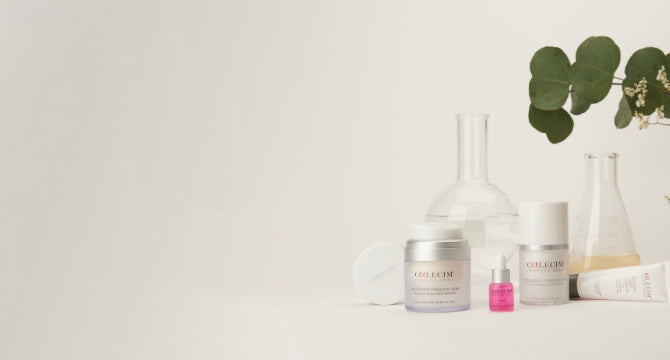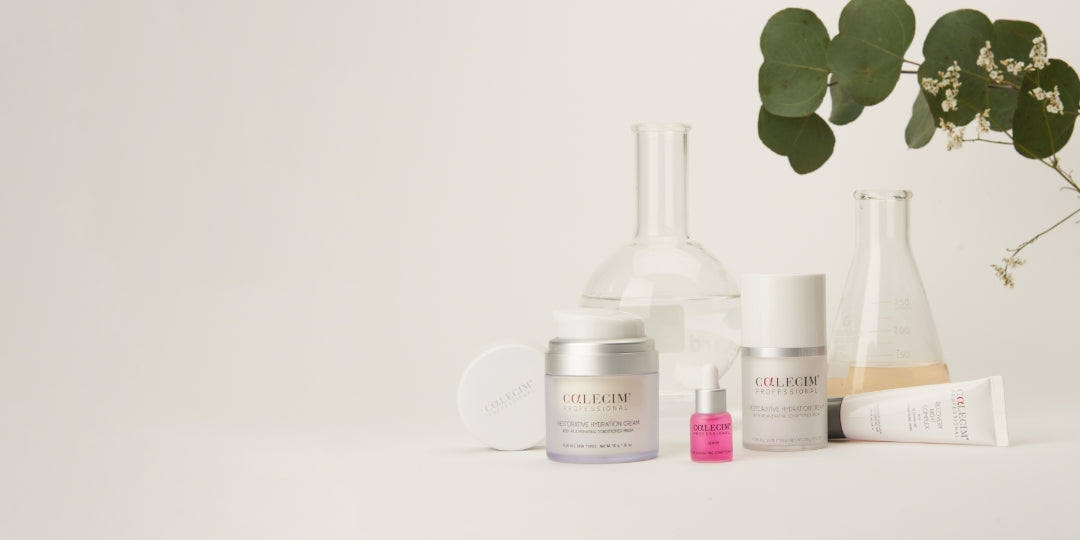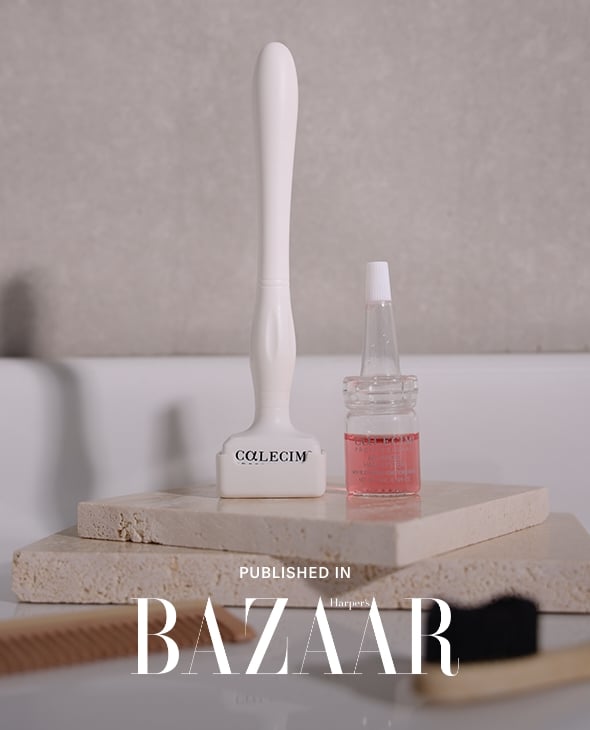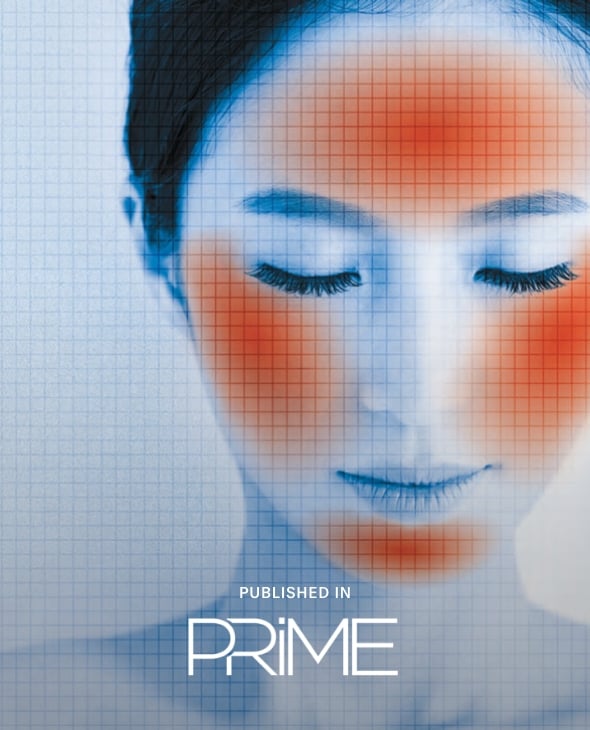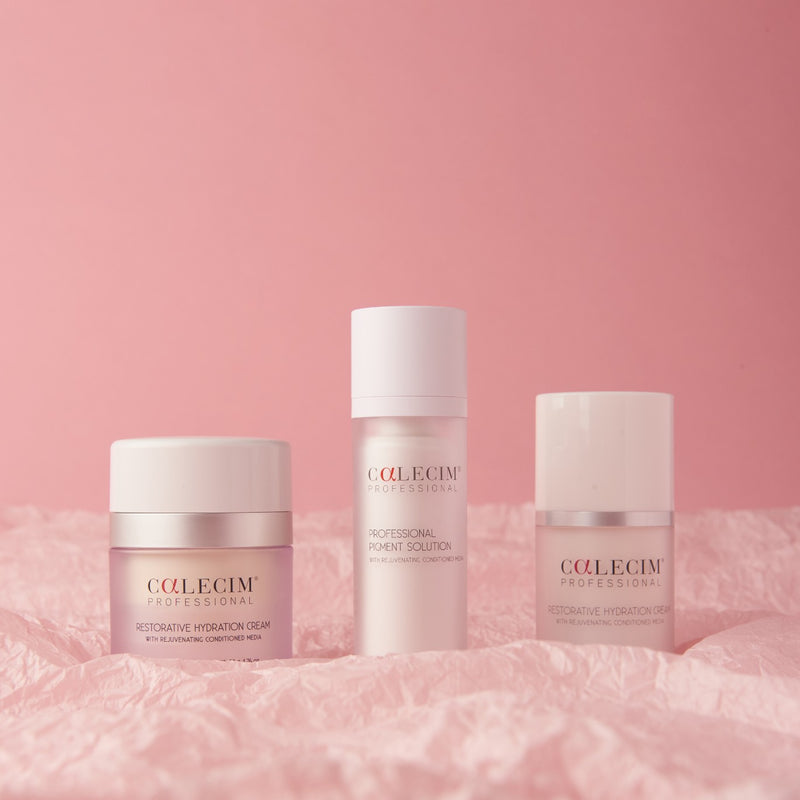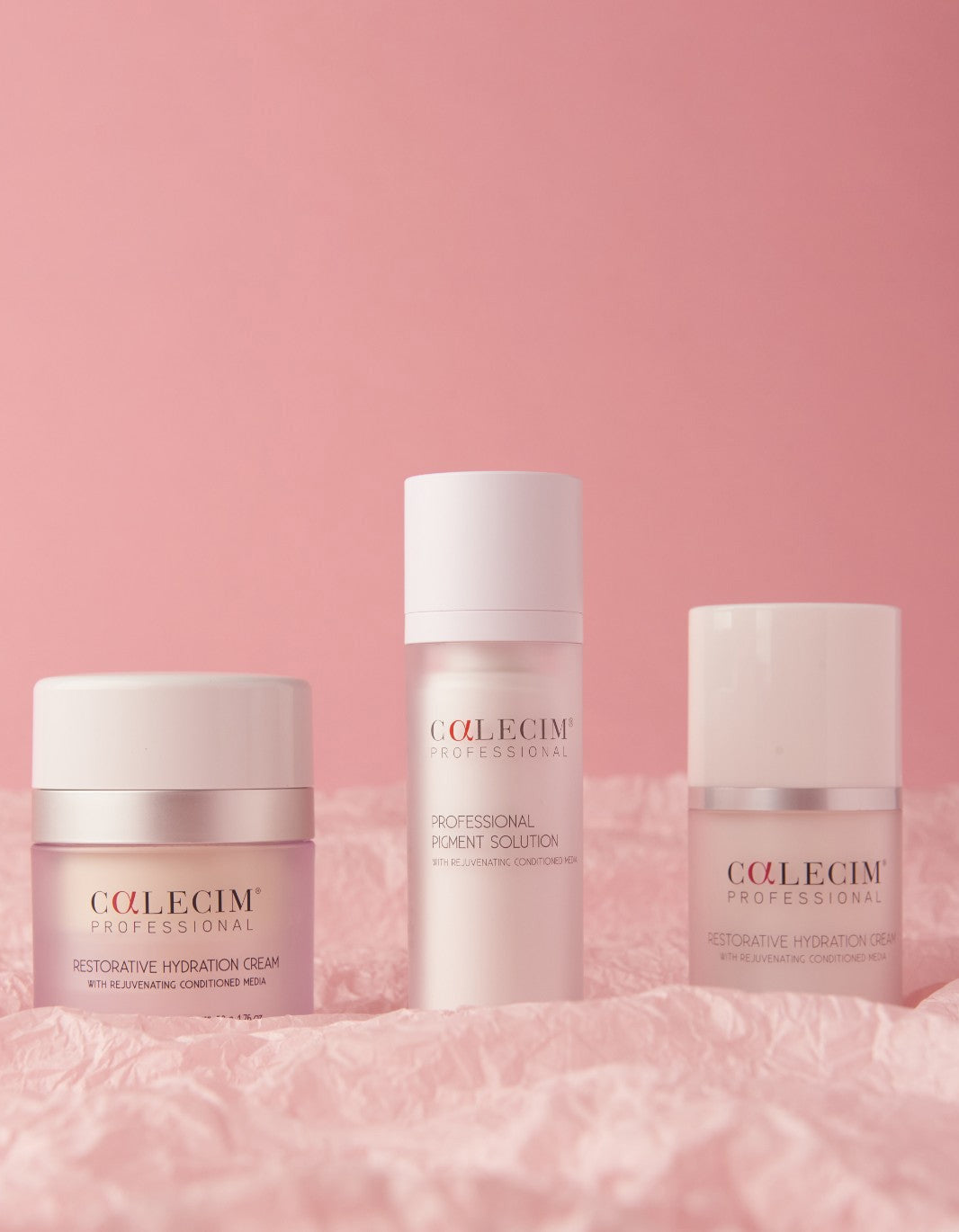Published in
Would you have 20ml of fat sucked out of your thigh, then injected all over your scalp three times at three-month intervals to regrow your hair? However unlikely (and unappealing) this sounds, this is a treatment that’s likely to be available soon, because a recent journal review suggests it may actually regrow hair. And in an industry that’s always on the hunt for the holy grail of curing baldness, techniques with any positive results, however small the studies, soon come to market as a treatment.
That’s why there are a lot of options to navigate. What makes this harder is that it’s not an everyday conversation. “People still feel shame and embarrassment when losing their hair,” says Anabel Kingsley, brand president and consultant trichologist at Philip Kingsley. Men can be scared of being seen as vain, whereas women, according to Kingsley, “apologise and say ‘I know I’m not dying’ or ‘I’m sorry if I seem silly’. But hair loss isn’t trivial,” she adds.
The search for a good treatment isn’t helped by the gap between starting to use one and seeing any change – it can often take at least three months and sometimes up to six. This means people will try one thing, see no difference, and then try another.
“The thing with hair loss is that you can spend a lot of money doing treatments that aren’t the best ones for you,” says Sunil Kochhar, a pharmacist who specialises in trichology. “An expert will help you find the cause of the alopecia, and from that create a personalised treatment plan.” For example, if the cause is hormonal, you will start with a hormonal treatment.
These are the current treatments that have the best evidence.
The drug-free treatment that tells follicles to grow
Calecim contains ethically collected stem cells from the umbilical cord lining of a red deer, which have been cultured in a lab. It sounds extreme, but stamping the extract can apparently work wonders by telling follicles to grow. Studies show it does boost follicles and can lead to a 30 fold reduction in inflammatory signals, a leading contributor to follicle death. A course is two treatments a week for six weeks; you can also do this at home.

Kelly Morell of Scalp Confidential, an aesthetic practitioner who specialises in hair loss, says she’s seeing results in as fast as six weeks in the clinic, even on people who haven’t responded to other treatments. “People are having it because it’s drug and hormone free and therefore free of the side effects that can come with more traditional first line therapy such as minoxidil,” she says. Clinic sessions are expensive, from £315 at The Private Clinic. The six-week home kit costs £315 (available on the Calecim Professional website).

The circulation boosters
Increasing circulation to treat hair loss may not sound very scientific, but it’s a key part of treatment, says Kochhar. “It means more nutrients and oxygen reaching the follicle.”
Minoxidil
This is the first line treatment for most types of hair loss. Originally a drug to treat blood pressure, it increases blood flow by creating new blood vessels to follicles. It also works against dihydrotestosterone (DHT), the hormone that causes Male and Female Pattern Hair Loss (MPHL and FPHL). Seventy to 80 per cent of people respond to minoxidil. You can buy a 2 per cent lotion for women but studies suggest the 5 per cent men’s version works better, although doctors prescribe up to 10 per cent. There’s also now a prescription-only pill.

The downside is that minoxidil only works while you’re using it. The fallout after stopping has a name, the “dread-shed”. Some people find minoxidil irritating, and it also may produce more fluff than full-length hairs. It works best when combined with other treatments and is widely available in chemists or online. Brands to look out for: Minoxidil Liquid Extra Strength Hair Regrowth (£49.99, available from the Hair Repair Clinic), DAVV Hair Growth Serum, Men’s Rogaine 5% Minoxidil Foam (£34.95, available on Amazon).
Scalp self-massage
Massaging your scalp can help you keep the hair you have and even increase hair thickness. Rob English at Perfect Hair Health has developed a massage protocol that takes 15 minutes a day. His 2019 survey showed that twice-daily 20 minute sessions helped nearly 70 per cent of people to stabilise their hair loss. It’s a big time commitment – although doing some is better than none and you may also get more toned arms from doing it daily.
“People assume they need to massage the part that is balding,” says Kochhar. “But in fact, the important areas are where the band of a baseball cap would go. This is where you’ll find the muscles that are responsible for vasoconstriction. This effect was discovered when patients with headaches had Botox, a muscle relaxant, injected into those areas, and their hair grew.”

You can buy a gadget to do the heavy lifting. Grow Back sells the ScalpHero, a hand-held vibrating massager with little rotating rubber heads that feels like someone is digging their fingers in your scalp (£99, available at Grow Back).
Low Level Laser Treatment (LLLT)
This is the same kind of red light (LED) that’s driving the boom in regenerative face masks for skin. Red light stimulates the production of molecules that relax blood vessels. A study from China on men and women with pattern hair loss used helmets that had LEDs only on one side.

It showed that treatment for three times weekly for 30 minutes a time increased density on the treated side by 25 per cent. Buying a helmet (which works on both sides!) isn’t cheap: the newest one from CurrentBody costs £650 (available on their website). Use it every day for 10 minutes; visible results from 16 weeks. A good addition to other treatments, or a preventative treatment if you have a family tendency for hair loss.
The hormone correctors
The most common form of hair loss in men and women, Pattern Hair Loss, is driven by hormones, specifically an inherited sensitivity to a build-up of DHT in follicles.
The prescription medications for men
Both the male-only prescription drug finasteride (Propecia) and dutasteride, which is prescribed off-label in the UK, work by reducing the conversion of testosterone to DHT, the hormone which causes hair loss. Both come as a pill or topical. The response rate is high – around 70 to 90 per cent – if the hair loss has been correctly diagnosed as MPHL.
The problem is that DHT is key for male characteristics such as beard hair, but also sex drive, so side effects can include a drop in libido and an inability to have or keep an erection. “If someone has side effects, they usually come on quickly in the first few days or weeks and resolve shortly after stopping,” says hair transplant surgeon Dr Chris D’Souza. “I’ve never had a patient with Post-Finasteride Syndrome but there are a lot of scare stories online for these drugs that I know puts patients off taking them.”
The prescription medication for women
The most common hormonal treatment for women is the anti-androgen drug called spironolactone, a diuretic that’s prescribed off-label. It’s most often given to women with polycystic ovary syndrome (PCOS), a condition characterised by high levels of androgens.
“In my experience, spironolactone can be a very effective treatment for hair loss in women when there are raised levels of male hormones (androgens) or increased sensitivity to normal levels of androgens, which is very common in conditions such as PCOS,” says functional medicine doctor Dr Klaudia Raczko.
Also a widely used diuretic, spironolactone is cheap. “However, some patients may experience side effects such as dizziness and feeling lightheaded and more rarely, breast tenderness. These will usually depend on the dose.”
Starting body identical HRT may also help with midlife hair loss because loss at this stage is linked to the drop in oestrogen and progesterone. The Philip Kingsley clinic also adds these hormones plus anti-androgens to topical minoxidil.

Pumpkin seed oil and rosemary oil
Nature has its own ingredients that reduce the conversion of testosterone to DHT, including pumpkin seed oil and rosemary oil. A 2015 study showed that applying rosemary oil is as effective as 2 per cent Minoxidil in treating androgenetic alopecia (APA). There are also supplements that, in test tubes, do the same, such as saw palmetto and reishi mushroom. The side effects of natural products are lower – but so is how strongly they work. Best used in conjunction with other treatments.

The anti-inflammatory
Better known as the sleep-regulating hormone, melatonin is a powerful antioxidant and anti-inflammatory when applied to the scalp. “Studies also show it blocks DHT, the hormone that causes pattern hair loss, helps minoxidil work better, and that hair follicles have melatonin receptors that stimulate hair growth,” says Kochhar. In a recent review, eight out of 11 studies had positive results on growth. Melatonin needs to be prescribed off-label. Available as a prescription from GrowBack.
The regenerators that kick-start your follicles
This is the category where the fat jab described above – aka autologous fat grafting – fits in. Fat is full of stem cells that, when added to the follicle, tell it to go into the anagen (growing) stage rather than the telogen (shedding) stage.
But the power of all of these treatments, says Kochhar, is that they create tiny wounds that provoke the skin’s healing response, which then kick-starts follicles. “The main action of all the regenerating treatments comes from the needles causing micro-injuries to trigger hair growth,” he says. Needling in added growth factors, stem cells and/or and follicle-feeding nutrients then adds to this effect.
DIY microneedling
The cheapest way to provoke the healing response is to use a derma stamp or a roller, tools covered in tiny, thin needles that puncture the top layer of skin. Doing this twice a week should cause just enough damage to bring on the skin’s own healing response, which includes growth factors. A roller (£20, available at Plant Made) lasts around three months.
The “vampire facelift” for your scalp
When platelet-rich plasma (PRP) was launched as a face skin rejuvenating treatment, it was dubbed the “Vampire Facial” because it uses your own blood. It’s spun to extract the platelets which contain growth factors, which are then needled back into the scalp. “The growth factors signal to the dormant stem cells inside the hair follicles to regenerate and return to normal growth patterns,” says Dr Wassim Taktouk.
However, the treatment is only as good as your blood. For example, if you are diabetic or have insulin resistance, you may be low on growth factors. Around a third of people see hair growth, around a third stop losing hair and PRP doesn’t work for the rest. Four to six sessions is a course, and results will last 18 to 24 months. Treatments at Taktouk Clinic start at £650.
For hard-to-treat hormonal imbalance
Another kind of stem cell stimulator from another unlikely source, this time from trout gonads, polynucleotides are made from the building blocks of genes. Injected into the scalp, they help kick-start regeneration, activating stem cells. In a study of 20 men and women who had 10 treatments over four months, they showed less hair shedding, an increase in the thickness of hairs, and more hairs in the anagen (growing) phase.
“It’s especially helpful when there is a hormonal imbalance in women as this is hard to treat. When combined with HRT the success rate is high,” says Dr Surbhi Virmani. It is expensive, with treatments at Cosderm UK starting at £700.
The treatment that uses your natural skin tissue
Micrografting is very similar to the fat jab, except it uses an extract of skin rather than fat. You’re given a local anaesthetic, then three tiny biopsies of skin are taken from the hairline behind the ear, an area where the follicles aren’t sensitive to hormonal changes and so aren’t programmed to bald. What’s injected back into the thinning areas is the growth factors (the same as in PRP above) but also follicle-boosting progenitor cells.

“Micrografting uses components found naturally in the skin, which the body recognises when they are injected back into the scalp. Unlike other treatments like PRP, it includes cells, which are key for stimulating hair growth” explains Dr Marco Nicoloso at Ouronyx. A study shows two thirds of people get more hair follicles – on average five to seven new hairs per square cm of scalp. It’s a single treatment at Ouronyx, costing £2,850, and results last 12 to 18 months.
















